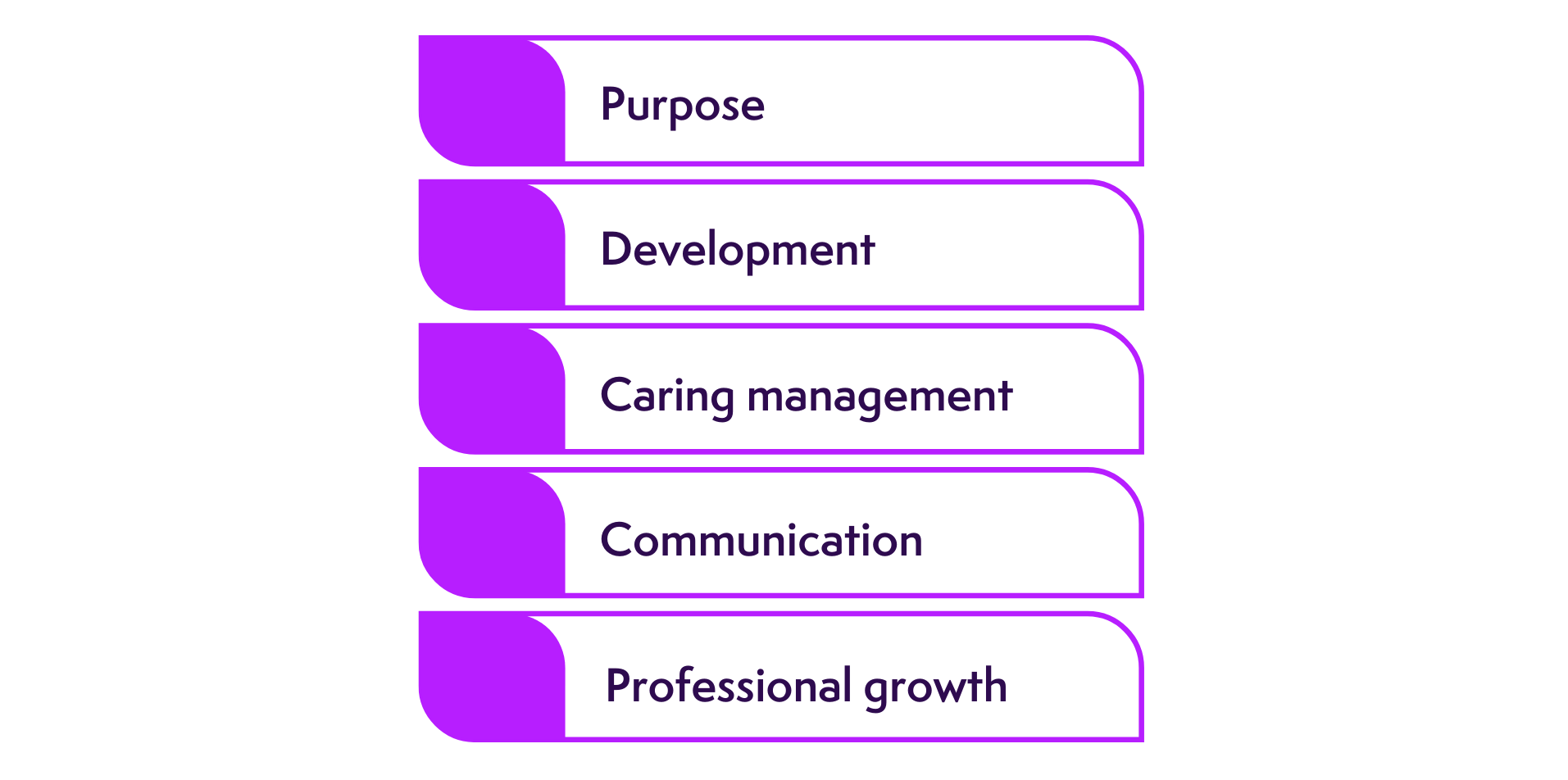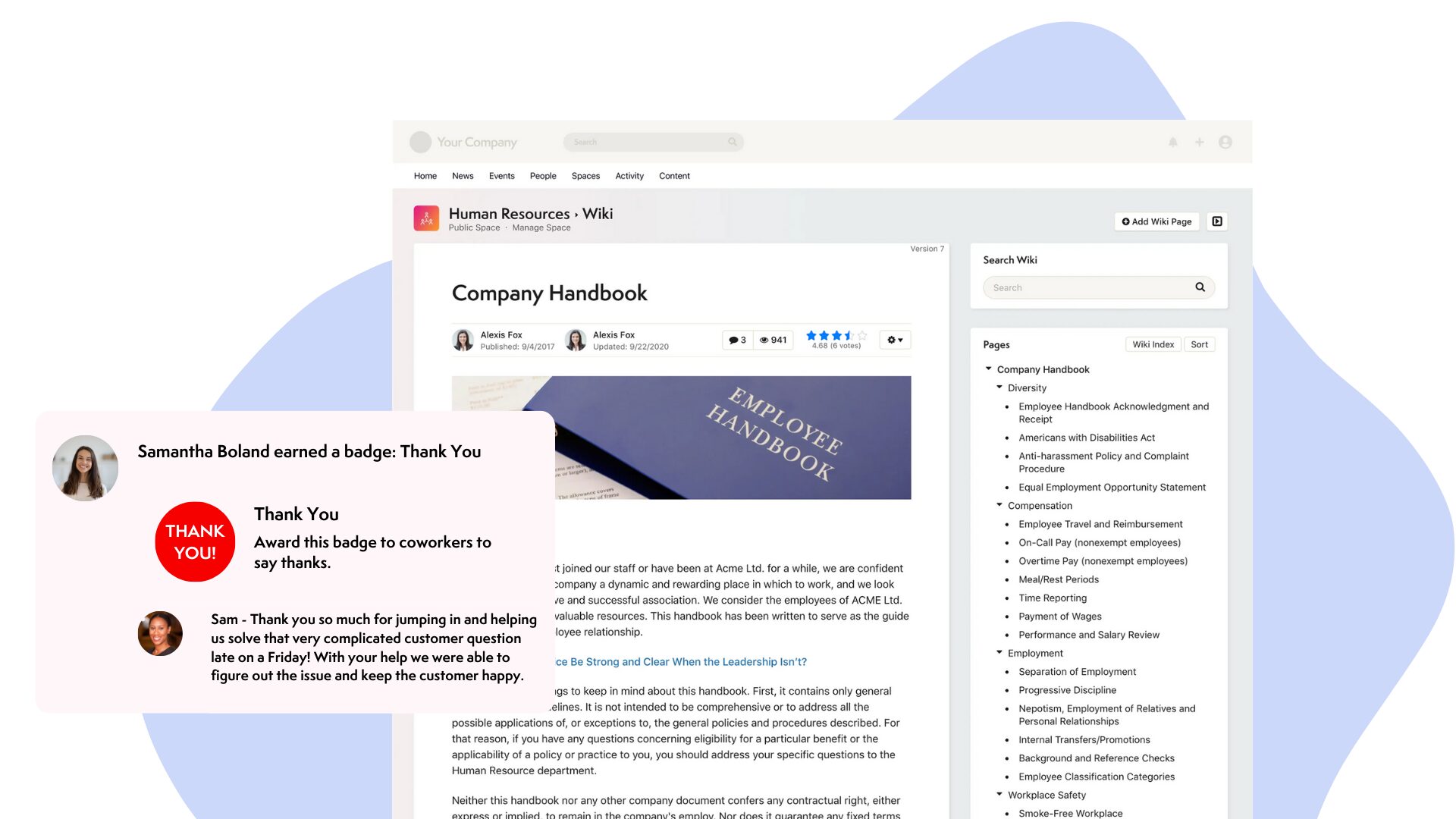Disengaged employees don’t wake up one day and decide to come to work with low morale. More often than not, feelings of disengagement grow slowly until they become unavoidable. By this time, the majority of employees are completely unaligned with company values and goals. Managers are then faced an uphill battle to reignite their teams and bring everyone back into the company fold.
Gallup’s 2023 State of the Workplace report revealed that disengaged employees cost the global workplace $8.8 trillion in lost productivity. Their next report in 2024 revealed that a whopping 77% of the global workforce is disengaged to some degree. These numbers highlight a profound deficiency in the workplace: employee engagement is a challenge for many organizations and disengagement will ultimately hurt a business’s bottomline.
As more employees fail to connect with the work handed to them by management and the tasks they are being asked to fulfill, is there a way back from this? Or will we be left with nothing but offices full of apathy?
What factors cause employee disengagement?
Company-wide employee disengagement is not caused by one factor. Though there might be a single reason why an employee begins to feel disengaged, there could be several factors affecting the whole company which ultimately causes employees to peel away. Unless these factors are addressed, it is likely that disengagement across the organization will snowball.
When looking at what drives employee engagement, the elements and strategies can be separated into three general categories:
Organizational
Emotional impact is a powerful tool that can be motivating or demotivating. The way employees fit into the structure and company culture of an organization will directly impact how they feel and perform within their role and within the company. According to Gallup, these elements significantly help keep employees engaged:
You may notice that the majority of these factors fall under the organizational category. The way an organization lays the groundwork for its employee experience can be huge drivers in how engaged, or disengaged, employees are. Here’s some areas to consider:
- Leadership and management relations: Does management have scheduled one-on-ones with their team and are they supportive? Do people on the top have a reputation for bad leadership? Do employees feel uncomfortable sharing feedback because they think it will dismissed or used against them in the form of a critical and destructive attack?
- Work life balance: Job burnout is a real phenomenon that takes a hit on the mental health of employees and causes them to become disengaged. In some cases, time off could do the trick. But when burnout is widespread, the root cause likely extends into the culture and work environment.
- Professional growth: Nurturing growth opportunities is what differentiates a job from a career. Without career development, people start to feel stuck, unmotivated, and the days become mundane. No one wants to feel like their wheels are turning while getting nowhere fast.
- Communication: Internal communication connects employees to important information and the mission of the company. If there’s communication gaps within the organization, employees begin to feel disconnected and disassociated from their role.
The organization plays an imperative role in nurturing and motivating employees to be engaged. To do so, workplaces need to be a psychologically safe environment that supports growth and open communication.
Workplace
Sometimes, aspects of the workplace or the job itself can cause an employee to feel disengaged. Physical work conditions of the office could play a role. Chairs could be uncomfortable, desks could be inadequate and cramped into a space too small for everyone, and there could be a lack of security for personal and work items. Maybe, even, the technology employees rely on are inefficient and due for an upgrade.
It’s important to ask: is our workplace designed for success? Whether it’s tech or structural issues, unnecessary headaches and stress can seriously upset employees and will lead to disengagement. Employees deserve a safe and comfortable environment to work in.
Personal
Sometimes personal issues bleed into our work life. When this happens, it can feel impossible to completely push everything to the side. The role of the manager is to balance company goals while also offering support and understanding. Moments like these can play a huge role in the bigger picture of building a motivated and engaged staff.
There’s also times when employee disengagement stems from interpersonal issues that started at work. For example, an employee may have issues with another colleague and feel like their concerns are ignored by management. A main responsibility of managers is to manage people and situations like this can create personal resentment, ultimately creating more disengaged employees.
What are the signs of employee disengagement?
So, we now know why employees are disengaged, but how can we spot it? When you know the signs to watch for, you can start creating impactful action plans. Let’s take a look at some of the signs you need to keep an eye out for:
Productivity
When disengagement grows, employee performance and productivity levels go out the window. Employees have no desire to connect with their work, so what’s motivating them to get their tasks completed? Work output declines, and avoidable mistakes slip through the cracks.
Absenteeism
If employees are disengaged, you will likely see a rise in absenteeism in the workplace. It’s normal for employees to take a couple personal days here and there, but what’s not normal is blatant and consistent detachment from work objectives. Do you have employees dropping out of meetings last minute, often missing from their desks, and always on a coffee break? That is absenteeism in action.
Participation and collaboration
Collaboration requires at least two people willing to work together to complete a project or task. When you have actively disengaged employees, teamwork will decline. You’ll notice reduced productivity, less initiative from departments, and lower engagement from employees who are usually motivated. An unfortunate consequence of engagement issues is the toll it takes on others who put their best foot forward. Disengaged employees can feel like dead weight and with enough time, will rub off on others.
Attitude
A negative attitude will affect team morale. It isn’t pleasant to sit through team meetings with someone who rolls their eyes and complains about every task. Employees with a bad attitude do not want to provide feedback, they don’t want to chat, and you fear that having them in the office is actively creating a negative work environment.
Interest and initiative
If a worker is disengaged, we can safely assume that they’re not going to show an interest in new projects. They certainly aren’t going to show initiative and make suggestions for how to advance the project, never mind taking the lead. Trying to get a disengaged employee to interact with something new might feel like a struggle that will turn into a fight before any progress can be made.
This could also cross over to other factors like attitude and collaboration. Disinterested and disengaged employees don’t want to spend time with others. They don’t want to support their colleagues. Trying to engage employees who are disinterested will always be difficult unless common ground can be found.
Passive vs active
There’s many different kinds of disengaged employees. Trying to reengage them will require different techniques based on what the issue is. A nuanced approach is required to avoid insulting the employee or making them feel like their time is being wasted. Establishing whether they are passively or actively disengaged will be the first step in helping them change their behaviors.
A passively disengaged employee is typically mentally checked out. They will show up for work, and their productivity isn’t suffering, but they do not want to interact with their peers, they decline meetings, and you will never catch them participating in optional work events. They are here to do their job and that is all. Reengaging them might involve one-on-one meetings or growth opportunities to reignite a passion for their career and organization.
An actively disengaged employee is likely openly disruptive to the work environment. The only way to solve this is by having an honest conversation about why they are behaving this way, the impact it has on others, and what needs to happen to solve the problem. For example, a worker may be routinely ignored by their supervisor, causing them to lash out. By uncovering the root cause, the organization can correct management skills that may be impacting other employees and support the disengaged employee to get back on track.
How can we turn employee disengagement around?
Nurturing engaged employees from disengaged ones can feel like an uphill battle. However, it is possible to reengage them and get your workforce reconnected with the company culture and team mission.
Go back to the drawing board
Sometimes, you need to look within and acknowledge that the strategy originally set needs improvements. If you want to see more engaged employees, chances are that you will have to analyze your culture, company values, and employee engagement strategy.
When there is a severe disconnect between employees and company expectations, sometimes the best thing to do is start from scratch. By taking things back to the basics, you show employees that you are committed about transforming your organization into a workplace that prioritizes employee happiness.
Ask employees what would help them
If you want to improve employee morale, a great place to start is by talking your workers. People become disengaged for a reason, so one of the most effective ways to bring positive change is by involving your employees.
You can ask a team collectively and on individual levels. There may be some changes that could help a team come together successfully, but won’t necessarily help employee motivation on an individual level. Hitting the sweet spot between the two will be vital in creating lasting engagement for the future.
Build a new company culture
With a clear idea of what employees actually want to see, the next step is to incorporate their ideas into the company culture. Outline values, initiatives, and benefits that people want to support. Your company intranet is the perfect place to give your culture a digital footprint. Promote these ethos through intranet content to bolster engagement and interest.
Be sure to also celebrate the culture with everyone. Employee engagement tools can incorporate company values into everyone’s day-do-day. Culture should not be meaningless words mentioned during onboarding. Instead, it should be celebrated and upheld by everyone, regardless of their position.
Recognize people’s achievements and efforts
After you made the effort to rebuild an organizational culture that ignites employees to be engaged, you need to make sure that ongoing employee recognition is part of your plan. Recognition can take many forms and it can be as often as you want, just make sure it is earnest. Employees can tell when praise is half-hearted. Even if it is just a quick shoutout at a morning meeting, it needs to be sincere.
This extends to both private and public praise. When managers give recognition during one-on-ones, they should also share it with the whole team. Likewise, if an employee gets a lot of praise in front of the team, they should also be given some in private, even if it is as simple as a message saying, “good job.”
Revisit as often as needed
As workforces change and businesses grow, values will need to evolve as well. Improving employee engagement is never a quick fix and is an ongoing process. To be as effective as possible, management should revisit it frequently (on an annual basis at a minimum), and make adjustments as they see fit so that the workplace always reflects the needs of employees. How can you expect a company to engage its employees when the values and motivation prompts were created at an entirely different time, potentially even for different employees? Keep it current, and keep it fresh.
Keep employees switched on
Employee engagement is incredibly important. Poor engagement levels lead to unhappy employees and high turnover rates. If you feel like there is a revolving door of new faces in your company, this signifies that employee disengagement and the work environment is likely a factor.
Successful companies thrive when their workers are happy. Listen to what your employees actually want and strive to provide it. The more you can find out about their challenges and feedback, the higher chance you have of creating a positive workforce.
One of the first steps can be bringing together everyone into one centralized platform that represents the voice of your organization and everything they need to work—from internal communications to knowledge sharing. Get everyone interacting in the same space and give them the tools they need to build connections and foster a positive work environment. Axero’s platform is the perfect solution to do this! Book a demo today to see how a streamlined platform can boost engagement and productivity.



















 info@axerosolutions.com
info@axerosolutions.com 1-855-AXERO-55
1-855-AXERO-55


